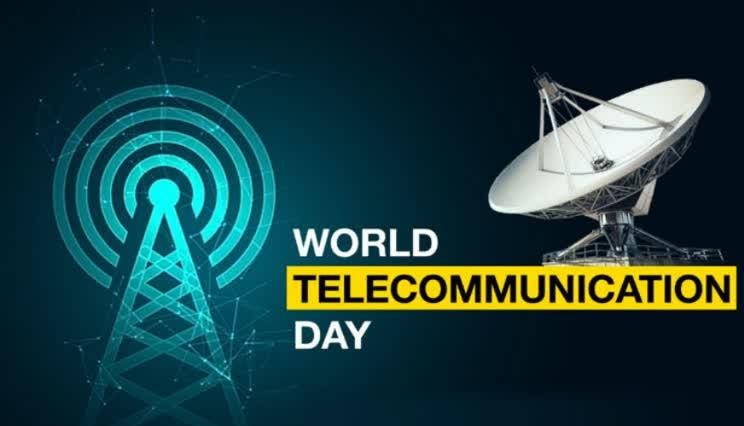
The Telecommunications Saga-An Astonishing Journey Satisfying Humanity’s Thirst for Information
From carrier pigeons to the 5G era, the evolution of telecommunications has revolutionized how we connect and share. On World Telecommunication Day, we reflect on this incredible progress and the ongoing pursuit of digital equality. Information has been a pivotal force in the advancement of human civilization. Today, information technology undeniably governs our world. Once relying on pigeons and then letters, we now hold the world in the palm of our hands, thanks to the revolutionary changes in the telecommunications sector. Let’s take a moment to recall this extraordinary journey.
The Dawn of Electronic Communication:
The invention of the telegraph by Samuel Morse in 1837 marked the beginning of a new era for transmitting information across vast distances. The transmission of electrical signals through Morse code laid the foundation for electronic communication, which in turn paved the way for radio communication. Subsequently, in 1876, Alexander Graham Bell’s invention of the telephone enabled direct human conversation.
The Internet and the Mobile Revolution:
In 1969, ARPANET, the precursor to the internet, was established to connect computers for research purposes. The introduction of the mobile phone call by Martin Cooper in 1973 made communication more personal. The widespread availability of mobile phones in the 1970s was a sensation. In 1990, Tim Berners-Lee’s invention of the World Wide Web brought the internet within reach of the common person.
The Social Media and Smartphone Era:
The launch of Facebook in 2004 ushered in the era of social media communication. The advent of smartphones after 2007 further personalized wireless communication. The same year, Apple’s release of the iPhone brought communication, computing, and entertainment into a single device. Today, cutting-edge technologies like artificial intelligence and virtual reality are further transforming the future of information technology. As technologies rapidly advance, 21st-century communication has expanded like never before.
World Telecommunication Day – A Call for Digital Equality:
Every year on May 17th, we observe World Telecommunication Day. This day commemorates the founding of the International Telecommunication Union on May 17, 1865. The primary objectives of this day are to raise awareness about the social changes brought about by the internet and new technologies and to reduce the digital divide between regions. The theme for 2025 is ‘Gender Equality in Digital Transformation.’ Gaps in access to and affordability of the internet and digital devices, along with limited digital skills, restrict the participation of women and girls in shaping tomorrow’s digital solutions in today’s economy. This theme emphasizes the critical need to bridge this gap to unlock new avenues for economic growth, innovation, and sustainable development.
India’s Telecommunications Development – A Robust Network:
After China, India boasts the second-largest telecommunications network globally, with 692 million subscribers. According to data released by TRAI on March 11, 2025, our country had 1189.92 million telephone subscribers as of December 31, 2024. Of these, 663.37 million were in urban areas and 526.56 million in rural areas. Regarding broadband internet connections nationwide, there are a total of 944.96 million connections, comprising 41.19 million wired connections and 903.78 million wireless connections. Among these, Jio holds a market share of 50.43%, Airtel 30.62%, Vodafone Idea 13.37%, BSNL 3.74%, Atria 0.24%, and others 1.60%. As of the end of December 2024, the teledensity in the country was recorded at 84.45%.
A Look Back – The Journey of Telecom in India:
Looking back at our history, Professor S. P. Chakravarti is regarded as the father of Indian Electronics and Telecommunications Engineering. Telecommunications in our country began even before independence with the introduction of the telegraph. In 1850, the British East India Company launched the first experimental electric telegraph line between Calcutta and Diamond Harbour for their own use. In 1873, duplex telegraphy was introduced between Bombay and Calcutta. In 1881, the Oriental Telephone Company Ltd. of England started the first official telephone services in the country by opening telephone exchanges in Calcutta, Bombay, Madras, and Ahmedabad. After independence, by 1948, there were only 80,000 telephone connections across the country. By 1971, this number had reached 9.80 lakhs. In the 1980s, the first satellite earth station for domestic communication was established in Secunderabad with the cooperation of the Soviet Union, with the Troposcatter System Link.
Liberalization – The Catalyst for Reform: Although the then Prime Minister Indira Gandhi attempted to bring about liberalization in the telecom sector in 1981, it did not materialize due to some political reasons. By 1991, there were 5.07 million telephones in the country. However, the liberalization, privatization, and globalization policies introduced by the P.V. Narasimha Rao government in the 1990s gave a sudden boost to this sector.
The National Telecommunications Policy of 1994 made telecommunication facilities accessible to all villages in the country. With the establishment of TRAI by the then government in 1997, government intervention in policy formulation and tariff determination decreased. In 1995, Tata Communications launched the first non-commercial mobile telephone service and public commercial internet facility. With the subsequent technological changes, we are advancing rapidly with 2G, 3G, 4G, and 5G. Research is now underway for the sixth generation. As technologies rapidly evolve, 21st-century communication has expanded like never before.
Telecommunications – A Bridge to Socio-Economic Development:
Telecommunications has significantly supported the socio-economic development of India. It has played a crucial role in somewhat reducing the digital divide between rural and urban areas. It has also helped in increasing transparency in governance through the introduction of e-governance in India. Furthermore, the government has effectively utilized modern telecommunication facilities to provide mass education programs for the people in rural areas of India. Continuing this remarkable progress we have achieved in the telecom sector, let us strive further towards achieving digital equality!











